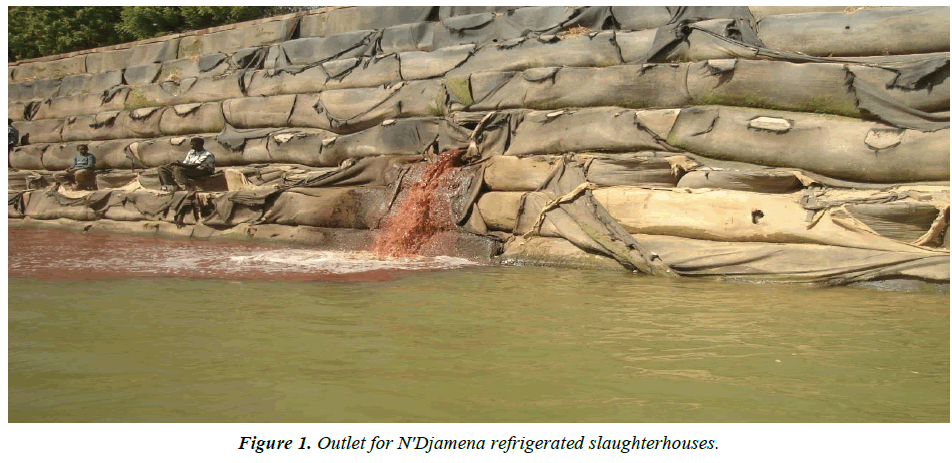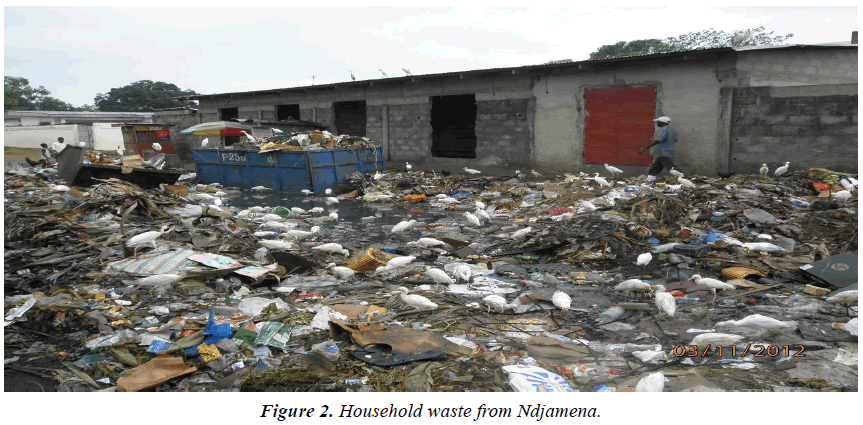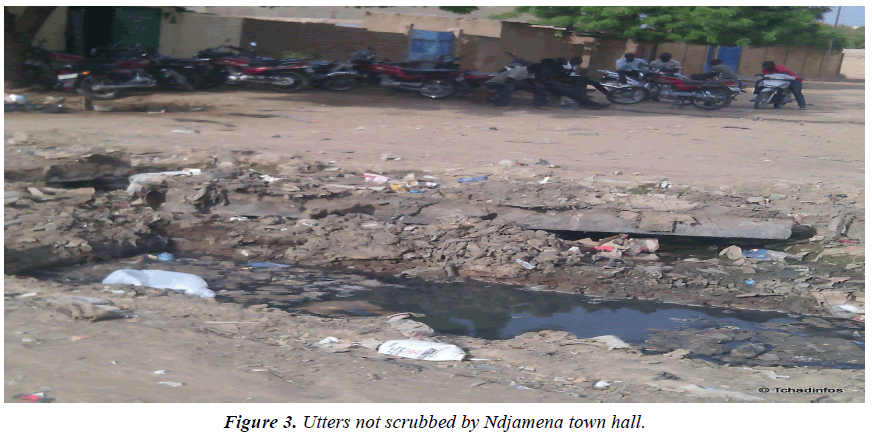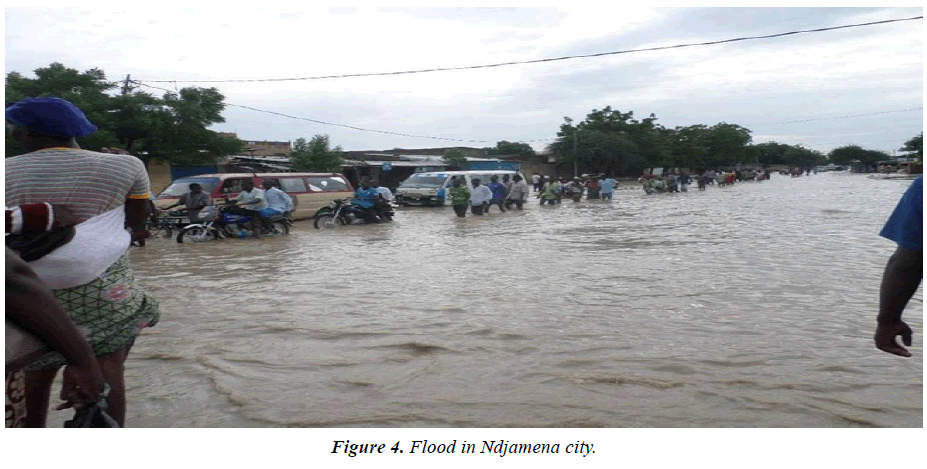Review Article - Environmental Risk Assessment and Remediation (2017) Novel approaches to Chemical Risk Assessment
Assessment of Environmental risks related to the release of industrial and domestic toxic waste in the aquatic environment of chad.
Allaramadji Beyaitan Bantin* and Xia Jun
School of Water Resource and Hydropower Engineering Sciences, Wuhan University, Wuhan 430072, China
- *Corresponding Author:
- Allaramadji Beyaitan Bantin
School of Water Resource and Hydropower
Engineering Sciences, Wuhan University
Wuhan, Hubei 430072, China
Tel: 008613163283857
E-mail: bantin2016@gmail.com
Accepted date: October 07, 2017
Citation: Bantin AB, Jun X. Assessment of Environmental risks related to the release of industrial and domestic toxic waste in the aquatic environment of chad.. Environ Risk Assess Remediat. 2017;1(3):80-83
Abstract
For human needs and the balance of aquatic ecosystems, the quality of the water must be good. Man, through his activities, contributes to the degradation of water, and this disturbs human activities, the balance between the natural environment and the animal and plant species that live in this environment. Apart from its geographical situation, Chad enjoys a relative abundance of rivers and watercourses, which provide many advantages. These rivers and streams, which supply water to agricultural, industrial and commercial farms, also ensure the maintenance of the water table and the perenniality of heterogeneous wildlife environments. Despite the fact that these rivers and streams are subject to climatic hazards, Chad remains among the countries in the world where rivers and streams are very fishy but it appears that the results obtained in the state of physicochemical quality of the Chari waters highlight the impact of pollution generated by discharges from domestic, agricultural and industrial waters.
Keywords
Risk assessment, environment, toxic wastes, industrial, domestics, aquatic environment
Introduction
The indiscriminate use of resources and the disposal of waste in the environment contribute to the degradation of our environment. This degradation has implications for human health, the economy, food production, flora, and fauna.
The Chari, one of the most important rivers in Central Africa, receives numerous urban and industrial discharges from the Chad border with the Central African Republic to Lake Chad. These so-called polluting substances have a rather heavy impact on the various ecosystems and are highly dependent on their interactions with the surrounding environment. They accumulate in the water and consequently in the living beings that ingest them in their organism. Disposal of various waste materials into rivers, estuaries, and marine waters is not a modern phenomenon [1]. The focus of this work is to give a detailed illustration of the effect of industrial discharge on the environment and human health. Some corrective actions should also be illustrated in the content of this work, to overcome the contamination of industrial discharge.
Pollution Sources
There are different types of pollution and water pollutants-
Chemical or industrial pollution
The chemistry of wastewater reflects human activities. Industrial, agricultural, and municipal activities are represented by the wastewater produced in each [2].
Almost every industrial establishment uses water for the production of various materials and for cooling it. Thus the waters used in these industries are rejected by being more or less polluted.
Industries in Chad are concentrated in N'Djamena, Moundou, and Sarh. Releases of these industries in terms of wastewater volume and chemical composition are not known since no publication on the characterization of pollutants is made in the industrial sector.
1. Sugar transformation industry banda/sarh (chad): The primary objective of this industry is the cultivation of sugar cane and the production of refined sugar in pieces or loaves and sweets from the sugar cane needed for marketing, with an annual production volume of more than 2.2 billion tons are the world's first crops grown by more than 23% of the total agricultural production in the world. Chad Waste Water from Chad comes from washing sugar cane, boiler room, cleaning the juice at evaporating and cooking stations, refining and cleaning the yard. These industrial discharges should not be discharged into the Chari River even after biological purification because these substances present in these industrial discharges can be dangerous for the aquatic environment and for humans (in the event of bathing or ingestion).
2. Chad society of cotton: a) Ginning: Chad society of cotton has a dozen ginning industries in the southern zone. The ginning plants separate the cotton from the grain after removal of the foreign matter and proceed to package for export. In order to be able to use the fiber, the non-cellulosic constituents must be removed. The raw cotton or preferably the fiber and the fibers are first boiled in alkaline solutions of sodium carbonate and sodium hydroxide. This operation, which removes the pectins contained in the cotton, is followed by bleaching in dilute solutions of calcium chloride and other chlorinated compounds, followed by treatment with diluted acids. After each operation, the treated materials are thoroughly rinsed with water. Cotton dyeing requires the use of some chemicals such as formaldehyde, water and energy. Ginning is a very mechanical process, usually accompanied by acoustic nuisance and heavy dust.
It is noted that these waste waters are excessively consumed most wastewater materials are biodegradable. However, it is possible that some compounds reaching the of water cause, during their degradation, a reduction in the oxygen level below the threshold required and trigger a process of putrefaction of water. In these waste waters, various types of pollutants: dyes of certain degradable surfactants, decantables, heavy metals: cadmium, mercury (introduced by caustic soda and hydrochloric acid), chromium (dyeing process), cobalt, copper and zinc, hydrocarbons a polluting charge of greater concern (oiling operation), organochlorine compounds, surfactants/ detergents, water temperature, pH: the company discharges partly acid and partly alkaline waters. The pH of the wastewater of cotton is generally alkaline. These waste waters can cause serious diseases to humans such as cancer. Most cancer patients tested would show a pH of 4 - 5, very acidic! This acidity of body tissue drives out the health-giving oxygen. Cancer thrives in an oxygen deficient acidic environment, a perish in alkaline, high pH, environment [3].
b) Oil plant: The oil mill in Moundou is under the supervision of the Chad society of cotton and produces oil pure and refined from groundnut and cotton grains. Hexane is used to extract edible oils from seeds and vegetables, as a special-use solvent, and as a cleaning agent. Acute (short-term) inhalation exposure of humans to high levels of hexane causes mild central nervous system (CNS) effects, including dizziness, giddiness, slight nausea, and headache. Chronic (long-term) exposure to hexane in the air is associated with polyneuropathy in humans, with numbness in the extremities, muscular weakness, blurred vision, headache, and fatigue observed [4]. The processing of oilseeds or parts of oilseeds is carried out in three phases: extraction of oil, oil refining and oil conditioning. This wastewater is directly discharged into the logone river, while washing one ton of vegetable oil requires about 0.9 m3 of wash water and produces about 0.17 m3 of wastewater containing sulfuric acid. Waste water contains the following substances: sodium sulfate, calcium phosphate, fatty acid, mono di triglycerides, glycerin, protein lecithin, aldehydes, ketones, lactones sterols.
c) Soap: The soap factory is a subsidiary of Cotontchad, it manufactures soap of linen from cottonseed oil and soda. All the by-products (glycerine) and residues of the additives (antilimescale agents, phosphates, preservatives, etc.) are directly rejected in the Logone River where they constitute a problem for the environment because they are non-biodegradable.
3. The breweries: Two breweries are located in Chad, one in Moundou and the other in N'Djamena. These breweries produce beer, soft drinks and mineral water of the boreholes. For washing and cleaning, breweries use chemicals such as caustic soda, bleach and nitric acid. The effluents can reach the following characteristics: pH variation of 0.8 to 13; temperature ranging between 20 and 50°C. Wastewater from breweries containing soluble organic matter and insoluble suspended matter (yeast, etc.) is discharged into the Logone River by the Moundou Brewery and into the Chari River by the Ndjamena Brewery.
4. The abattoirs: The objective of the Modern Society of Slaughterhouses in Chad is to slaughter, conserve and transport the carcasses of large and small livestock to supply fresh meat. Wastewater from slaughterhouses is also discharged into the river Shari. The slaughterhouse wastewater contains blood, plasma, contents of the bellies, intestinal and skin debris, disinfectants, urine, excrement ... Most slaughterhouse manure is used as fertilizer prior treatment or quality control (arsenic, antibiotic, phosphorus ...). The main risk of slaughterhouse wastewater is the microbiological risk (parasites, bacteria and viruses). However, the chemical risk on nitrogen (nitrate) and phosphorus and on emerging pollutants (drug residues) should not be underestimated (Figure 1).
5. Agricultural runway waters: In Chad, more than 30,000 hectares are irrigated. This area is subject to severe degradation as a whole. These are liquid agricultural discharges from irrigation water runoff that result in fertilizers, pesticides, herbicides, or organic discharges from large livestock operations. Pesticides and fertilizers contaminate groundwater by infiltration but above all the watercourses where they accentuate the phenomenon of eutrophication i.e. the depletion of rivers in oxygen due to the exponential development of aquatic algae which by rejecting CO2 asphyxiate other living things.
Domestic pollutions
There are two types of domestic wastewater:
1. washing or domestic water, which comes from bathrooms and kitchens and is generally loaded with grease, organic debris, detergents, solvents (Figure 2);
2. the sewage, which comes from the toilet and is loaded with various organic nitrogenous substances and fecal germs.
In Chad, the aquatic environment is increasingly being subjected to voluntary discharges of human waste: urine, feces (toilet waters) and toilet waters and cleaning of soils and food (domestic waste water). These waters are generally made up of degradable organic matter and mineral matter, these substances are in dissolved or suspended form. The city of N'Djaména, which has nearly one million inhabitants, produces 800 tonnes of solid waste per day and only 400 tonnes are regularly removed.
Household waste is regularly removed from the concession yards to be thrown into the street over the fences, or abandoned in the vicinity of garbage bins, or individual crude dumps, the front of the homes. And, in the specific case of N'Djaména, the insalubrity of the city resulted solely from the inability of the town hall to ensure the public service of collection of household refuse (Figure 3).
The gutters not scrubbed by the Municipality, particularly in the outlying districts, make us fear the worst. Filled with rubbish of all kinds, these gutters struggle to drain the rainwater into the Chari river. Consequently, the floods and its corollaries are frequent in the Chadian capital and every year, it is the same scenario (Figure 4).
Discussion
The fate and hazard of toxicants in the environment depends on the source (air, solid waste, soil, wastewater) and nature of the toxicant (solubility, volatility, adsorption properties, biodegradability etc.), transfer route (via precipitation, leaching), exposed compartment (soil, sediments, surface water, groundwater) and biological targets (water and soil ecosystems, animals, humans) [5].
Control of water pollution has been of paramount importance in developed countries and in a number of developing countries. Pollution prevention at source, the precautionary principle and prior authorization of wastewater discharges by the competent authorities have become key elements of effective policies to prevent, control and reduce inputs of hazardous substances, nutrients and other water pollutants from point sources in aquatic ecosystems. Recycling is a good way not to pollute and not to waste the raw material by reusing the materials to make objects. In this context, we recommend that the Ndjamena City Council strengthen its material capacities (garbage disposal machines, gutters ...), strengthen the population's education for proper household waste management, transform waste household. In this paper, we present the results of a study of the effects of a wastewater treatment plant on the production of wastewater from a landfill [6].
Conclusion
The management of hazardous waste of the central environmental issues throughout the world. At present, regulating measures for hazardous waste management in Chad. The quality of a stream or river is often a good indication of the way of life within a community through which it flows. It is an indicator of the socio-economic conditions and environmental awareness and attitude of its users. Everything that happens in a catchment area is reflected in the quality of the water that flows through it, because the results of human activity and lifestyle ultimately end up in rivers, through runoff.
In order to understand the scale of the problem and the consequences of the environmental risks associated with the discharge of industrial and domestic toxic wastes into the aquatic environment on the life of the Chadian population, it is remarkable to observe that wastewater flowing in the streets, garbage everywhere, habitat types, clogged culverts, excreta in public places, roads, and environmental management infrastructure. This lack of management of treatment infrastructures has considerable impacts on the quality of natural environments.
References
- Ludwig M, Gould E.Contaminant input, fate and biological effects. In: Pacheco AL, editor. Woods Hole (MA).NOAA/NMFS/Northeast Fisheries Science Center. NOAA Technical Memorandum NMFS-F/NEC 56. 1988:305-22.
- Timothy GE.Chemistry of Wastewater. Environmental and ecological chemistry. 2016;2:327-39.
- http://osumex.com/_phealth.php
- https://www.epa.gov/sites/production/files/2016-09/documents/hexane.pdf
- Kahru L Põllumaa. Environmental hazard of the waste streams of estonian oil shale industry: an ecotoxicological.Review2006. Laboratory of Molecular Genetics National Institute of Chemical Physics and Biophysics Akadeemia tee 23, Tallinn 12618 Estonia.54p.
- LeeGF, PE, BCEE,LeeAJ. Impact of Municipal and Industrial Non-Hazardous Waste Landfills on Public Health and the Environment: An Overview. Prepared for California Environmental Protection Agency's Comparative Risk Project. 1994:35pp.



